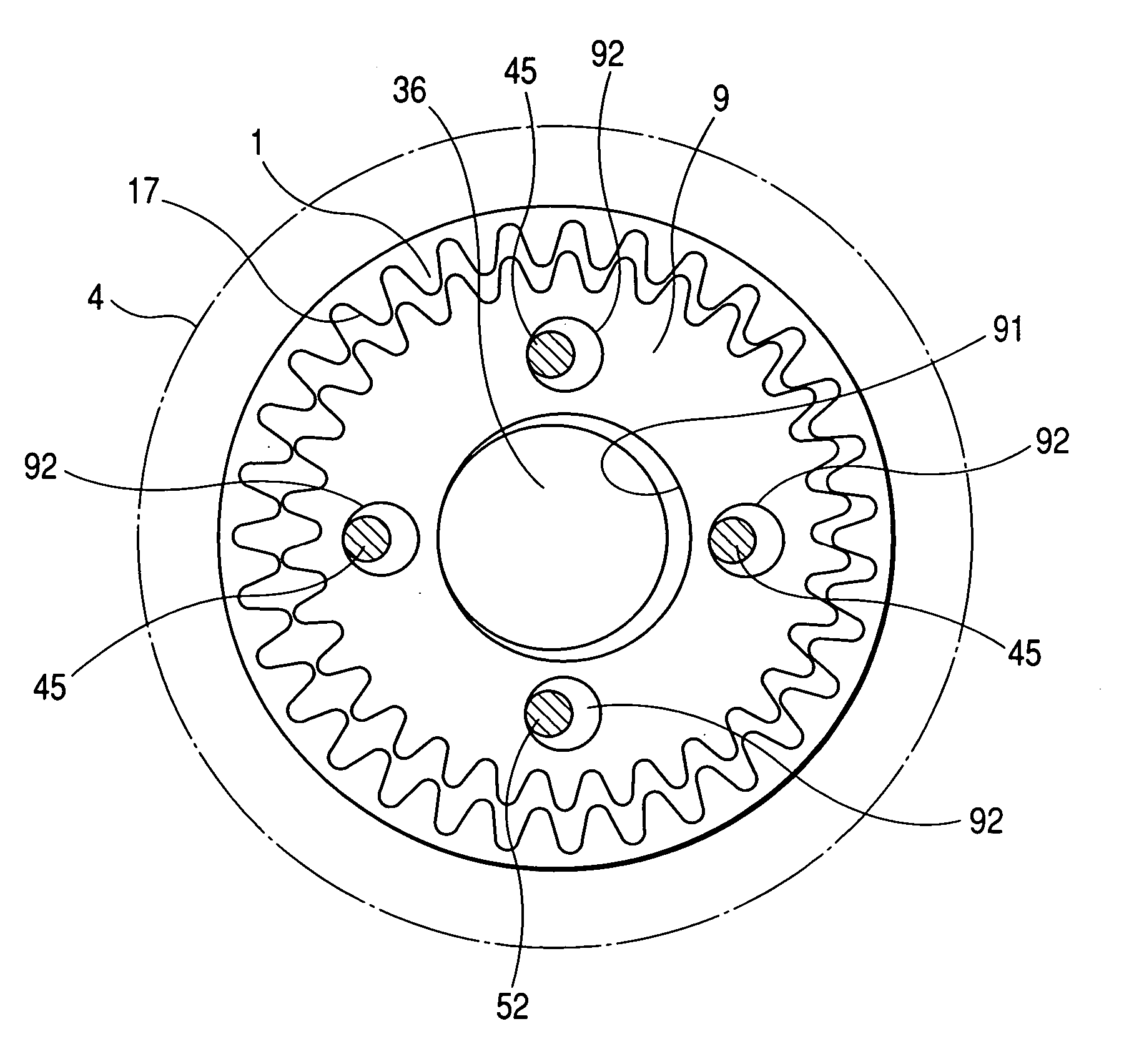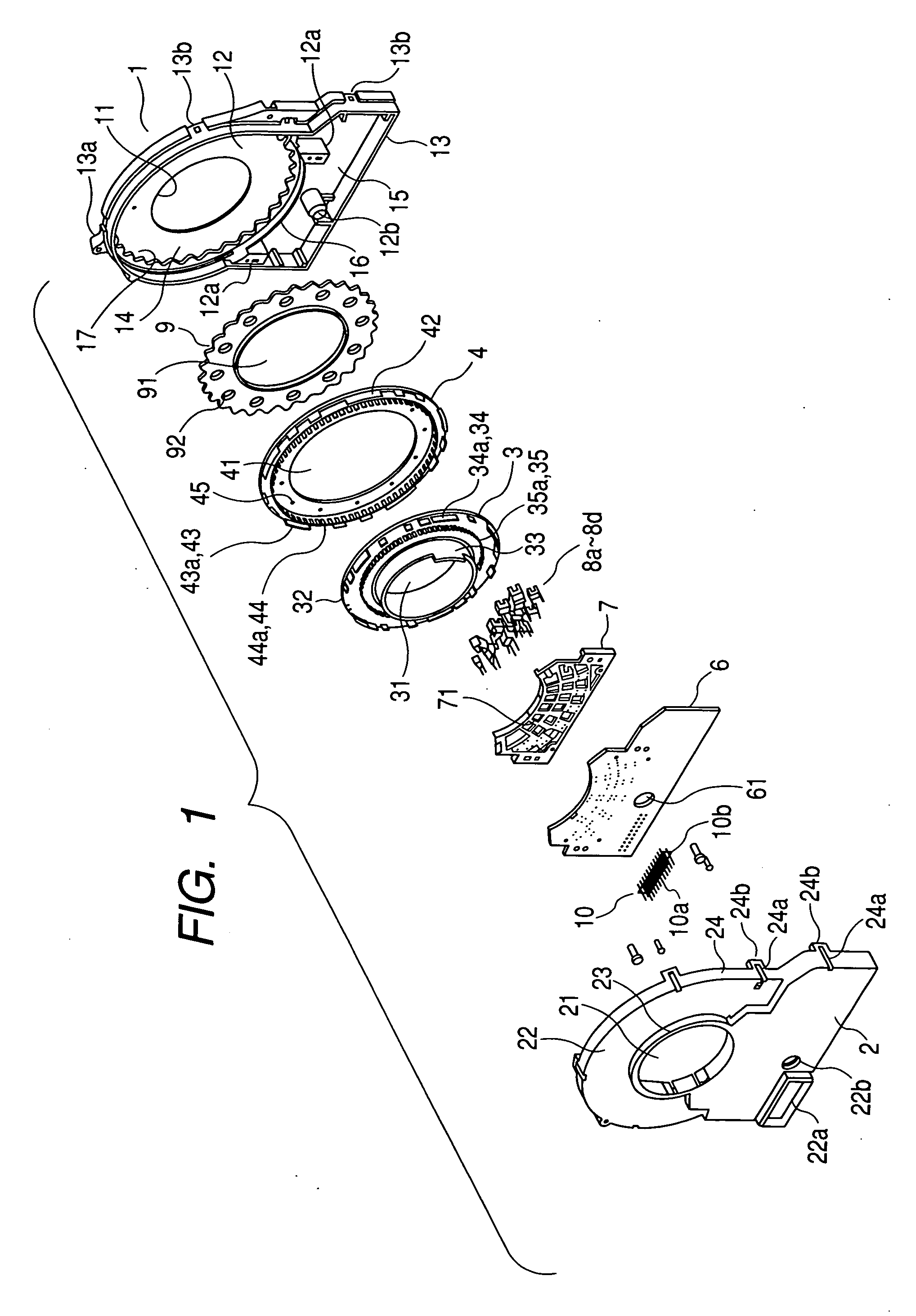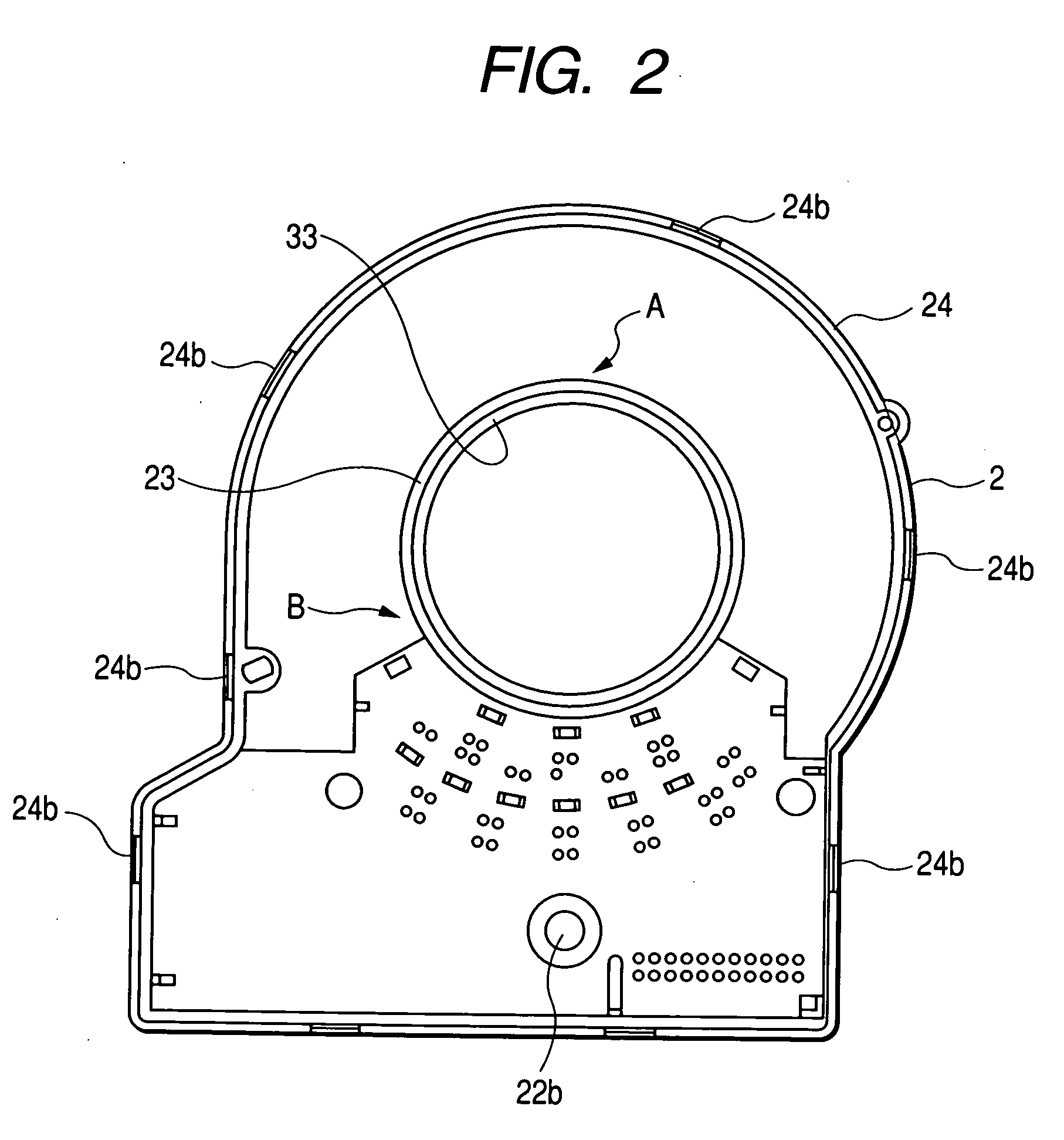Absolute angle detecting device
- Summary
- Abstract
- Description
- Claims
- Application Information
AI Technical Summary
Benefits of technology
Problems solved by technology
Method used
Image
Examples
Embodiment Construction
[0029] Hereinafter, a code wheel supporting structure of a rotation detecting device, which is an example of a rotary member supporting structure according to the invention, will be described with reference to FIGS. 1 to 8. FIG. 1 is an exploded perspective view of the rotation detecting device according to an embodiment of the invention. FIG. 2 is a view illustrating an inner side of a cover according to the embodiment. FIG. 3 is a view illustrating a rear side of a first code wheel according to the embodiment. FIG. 4 is a view illustrating an inner connection state of a planetary gear, an internal gear, and a second code wheel according to the embodiment. FIG. 5 is an explanatory diagram illustrating an assembly of the first code wheel, the second code wheel, and a signal detecting element group according to the embodiment. FIGS. 6 and 7 are tables illustrating gray-code patterns detected by the first code wheel according to the embodiment. FIG. 8 is a table illustrating a gray-co...
PUM
 Login to View More
Login to View More Abstract
Description
Claims
Application Information
 Login to View More
Login to View More - R&D
- Intellectual Property
- Life Sciences
- Materials
- Tech Scout
- Unparalleled Data Quality
- Higher Quality Content
- 60% Fewer Hallucinations
Browse by: Latest US Patents, China's latest patents, Technical Efficacy Thesaurus, Application Domain, Technology Topic, Popular Technical Reports.
© 2025 PatSnap. All rights reserved.Legal|Privacy policy|Modern Slavery Act Transparency Statement|Sitemap|About US| Contact US: help@patsnap.com



